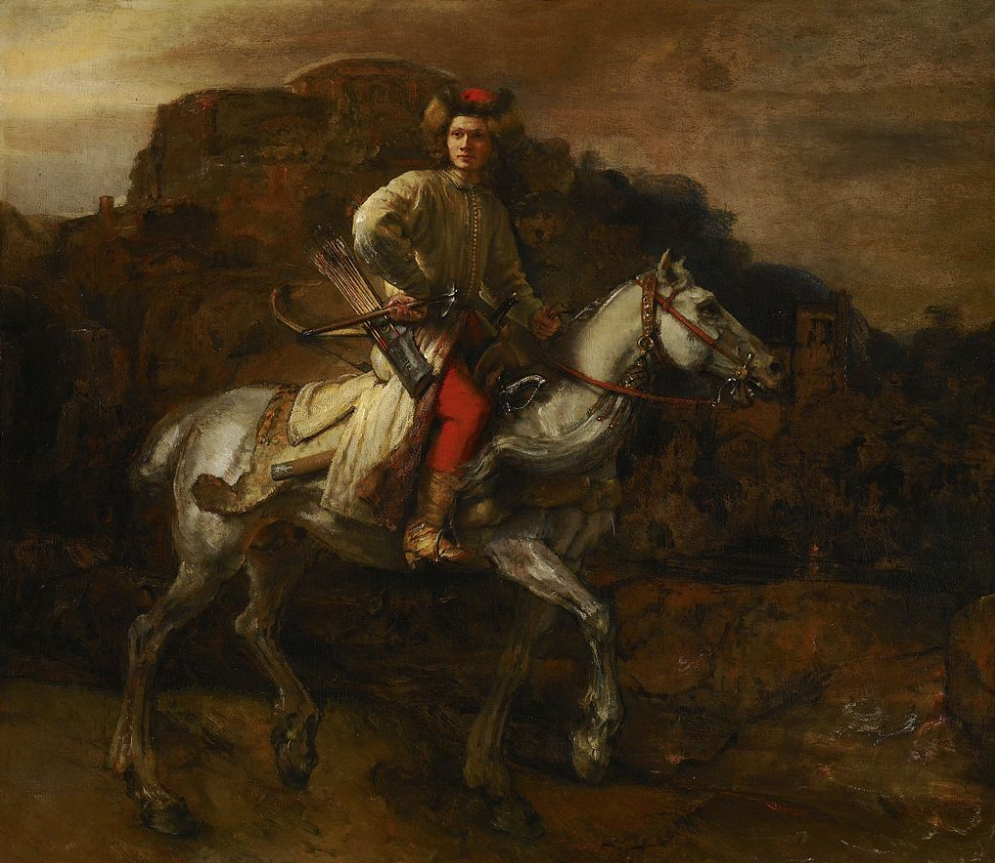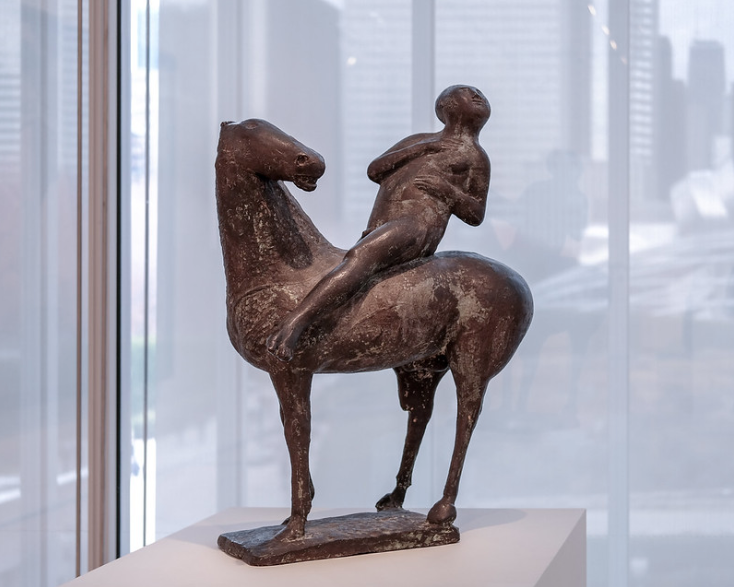Teach This Poem is a weekly series featuring a poem from our online poetry collection, accompanied by interdisciplinary resources and activities designed to help K-12 teachers quickly and easily bring poetry into the classroom.
The following activities and questions are designed to help your students use their noticing skills to move through the poem and develop their thinking about its meaning with confidence, using what they’ve noticed as evidence for their interpretations. Read more about the framework upon which these activities are based.
-
Warm-up (quick write): What are some simple things that you consider fun? Why?
- Before Reading the Poem (gallery walk): Walk around the room silently and observe the images of the painting The Polish Rider by Rembrandt van Rijn and the statue Horse and Rider by Marino Marini. Look carefully at each image. What do you notice first? Why? Look again: what else do you notice? Join with a partner and share your observations. Repeat. (Teachers, you may wish to give time constraints for this activity or assign students to view one image first.)
- Reading the Poem: Read the poem “Having a Coke with You” by Frank O’Hara silently. What do you notice about the poem? Annotate for any words or phrases that stand out to you or any questions you might have.
- Listening to the Poem (enlist two volunteers to read the poem aloud): Listen as the poem is read aloud twice, and write down any additional words and phrases that stand out to you. Call back the lines that you like by saying these lines aloud with your partner.
- Small-group Discussion: Share what you noticed in the poem with your partner and another pair of students. Based on what you just shared, what connections can you make between the poem and images you viewed at the beginning of class?
- Whole-class Discussion: What do you think is the relationship between the speaker and the “you” in the poem? Why? Why does the speaker allude to several works of art and what is the purpose of these allusions? (Teachers, if you haven’t already introduced allusion, now might be a good time to do so.)
- Extension for Grades 7-8: Explore and read more poems about love on Poets.org. Choose one of these poems to read closely. Share your poem with your classmates by either reciting the poem from memory or creating your own emulation or original poem.
- Extension for Grades 9-12: Explore and read more poems about love on Poets.org. Choose to closely read either a classic love poem or a contemporary love poem. Share your findings with your classmates in a debate about the differences between classic poetry and contemporary poetry. Be prepared to share why your chosen form is the best representation of love. (Teachers, you may wish to assign students to poems from the link above.)
More Context for Teachers
In his essay “Oh! kangaroos, sequins, chocolate sodas!: Frank O'Hara’s Excitement,” Wayne Koestenbaum writes, “I’d hate to fall into the trap of saying that O’Hara is in love with the world. Yes, he’s excited about things because they are beautiful—but he also holds that excitement lightly in his hand as a mirth- and tone-bestowing practice, and he is aware that beautiful (or faux-beautiful) things fall away from him, detach themselves, refuse his embrace.”


